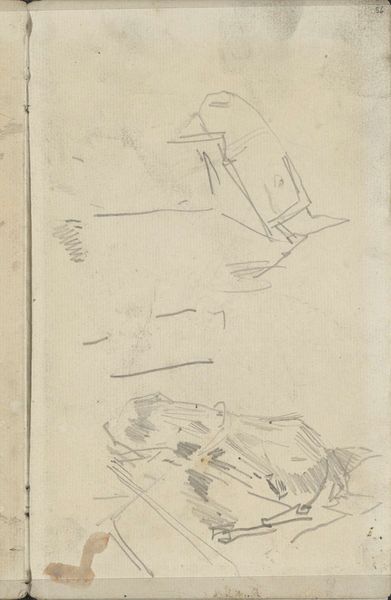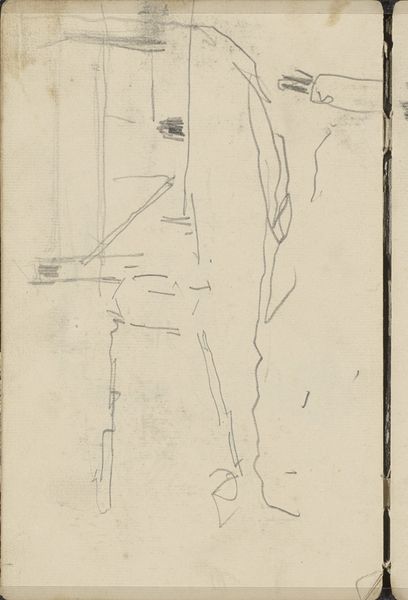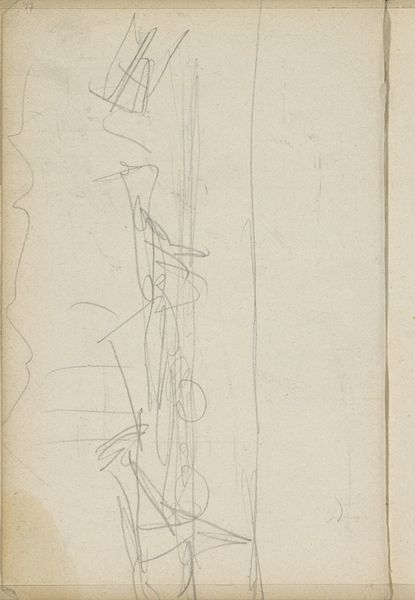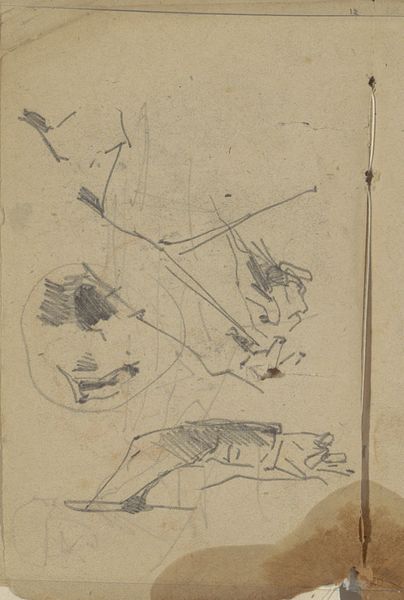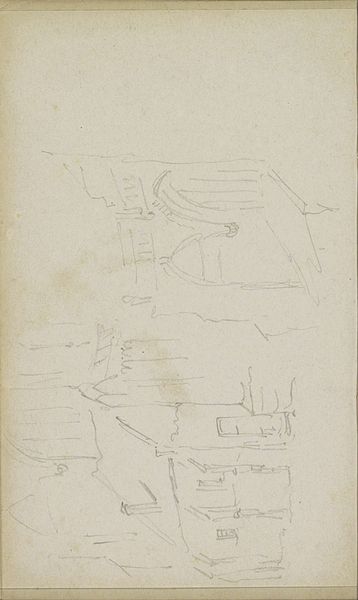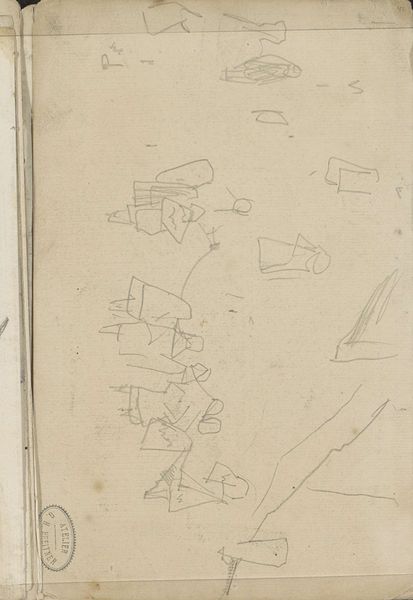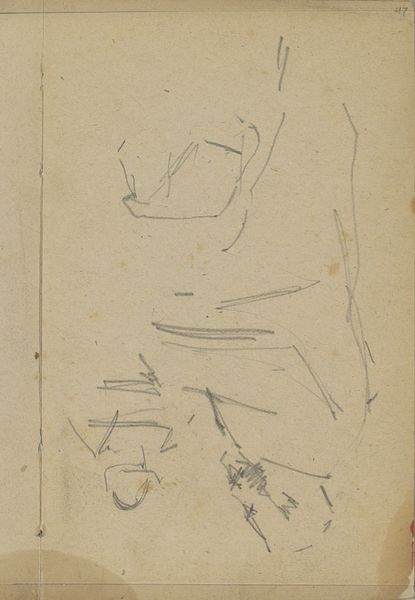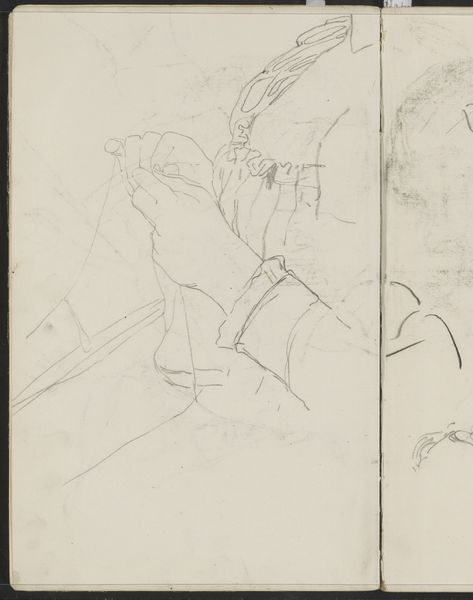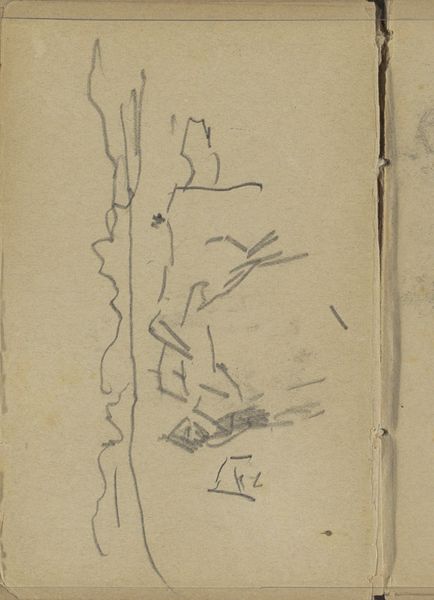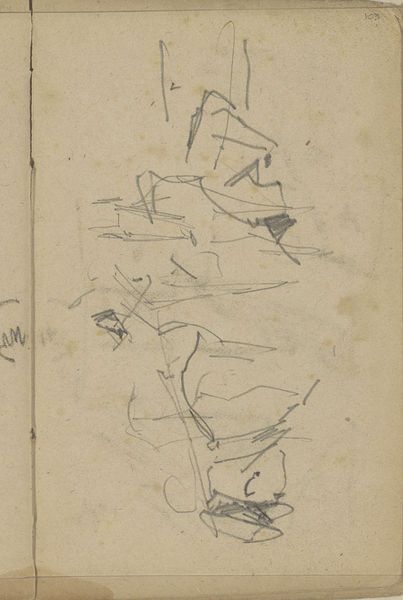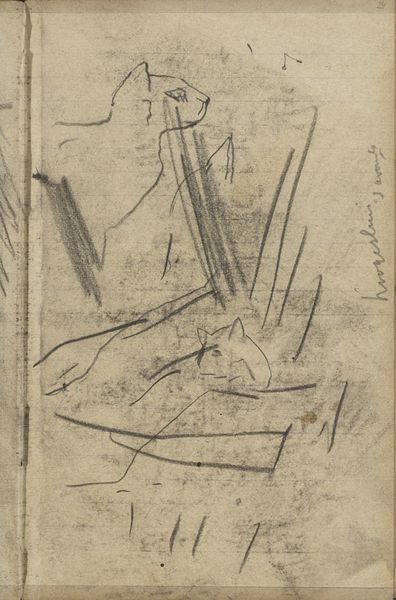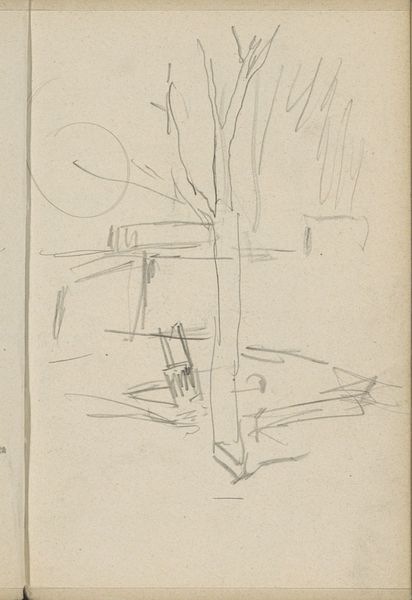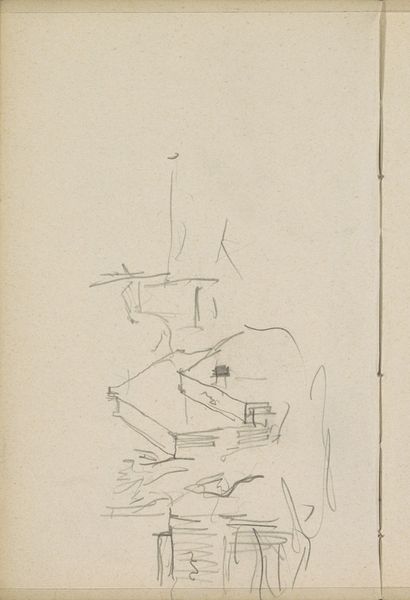
drawing, pencil
#
drawing
#
pencil
#
line
#
cityscape
#
realism
Copyright: Rijks Museum: Open Domain
Curator: Here we have George Hendrik Breitner’s "Gezicht in Amsterdam," or "View of Amsterdam," a pencil drawing from between 1886 and 1923, currently residing at the Rijksmuseum. Editor: My immediate impression is of ephemerality. Those delicate lines seem almost on the verge of vanishing, like a memory fading. The city feels sketched rather than solid, a ghost of itself. Curator: The use of pencil emphasizes its status as a working sketch. Consider the labor implied in creating such observational studies. It challenges notions of finished versus unfinished, art versus mere preparation. Editor: But even within those simple lines, certain recurring shapes pull the eye: repeated rectangles forming windows and structures, suggestive of a distinctly urban iconography, invoking thoughts about how modern life imprints geometric forms on our collective consciousness. What stories do these repeated patterns tell us about urban existence in Amsterdam at that time? Curator: These studies provided raw material for his paintings. It prompts one to consider the relationship between preparatory studies and the finished product, questioning the conventional hierarchy that elevates the final work above the process. And don't overlook how this materiality allows for immediate changes in depicting real places. Editor: And those windows, lined up in repetitive forms, they might imply a specific perspective on urban society—alienation, perhaps? Breitner has a way of suggesting mood more than prescribing it, encouraging one to reflect upon their subjective responses to urban life. It suggests that there's more to a cityscape than concrete and buildings. Curator: Precisely! Think of how widely available cheap drawing materials became by this period and its impact in expanding ways of documenting modern urban expansion. Breitner democratizes art-making via accessibility. Editor: In a very intimate and subtle method, it allows for a contemplation of one's place within a greater historical narrative, which really lingers with me after this viewing. Curator: The work, simple and pure in its form, asks for reevaluations of value assigned to processes within artistic production.
Comments
No comments
Be the first to comment and join the conversation on the ultimate creative platform.

